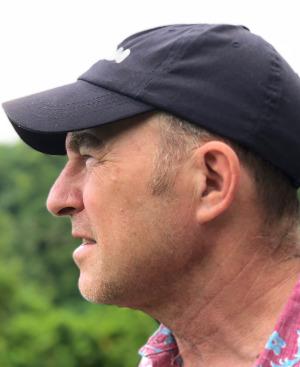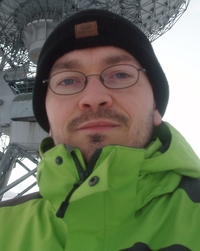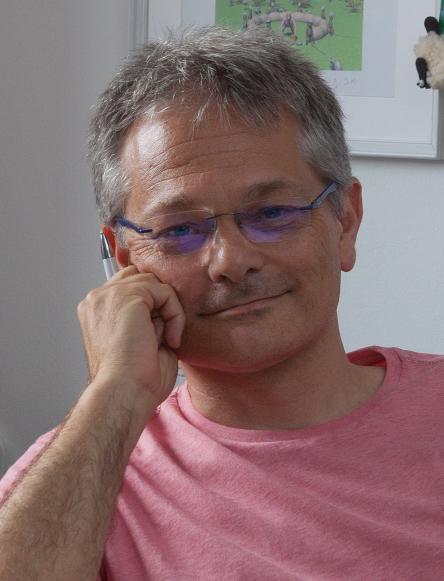Astronomy Across Disciplines
Parallel Session
3rd Shaw-IAU Workshop on Astronomy for Education
Session timeblocks
Tuesday Oct. 12, 2021
UTC: 2 p.m. -
3:30 p.m.
Wednesday Oct. 13, 2021
UTC: 9 a.m. -
10:30 a.m.
Schedule
-
Collaborations and Collisions in Science and Art
Tuesday Oct. 12, 2021
UTC: 2 p.m. - 2:20 p.m.Wednesday Oct. 13, 2021
UTC: 9 a.m. - 9:20 a.m.What happens when science and art collide? The Science Gallery network explores this exciting frontier where scientists and artists collaborate to bring their combined effort to the public in a variety of head-turning exhibits and performances. This talk combines inspirational works from Science Gallery Dublin with the personal journey of the speaker; from physics undergraduate, to Public Engagement Manager at the Royal Observatory Greenwich to researcher at Science Gallery Dublin, Trinity College Dublin. The talk will include practical guidance on how to promote a healthy backdrop for innovation when combining disciplines for public consumption.

Brendan Owens (Science Gallery at Trinity College Dublin)
For more information about this talk click here
-
Art-Science Collaborations at MIT: Case Studies
Tuesday Oct. 12, 2021
UTC: 2:20 p.m. - 2:40 p.m.Wednesday Oct. 13, 2021
UTC: 9:20 a.m. - 9:40 a.m.MIT established the Center for Art, Science & Technology in 2012, with the broad mission of creating new opportunities for art, science, and technology to thrive as interrelated, mutually informing modes of exploration, knowledge, and discovery. Partnering with laboratories, academic departments, faculty, researchers and students, CAST has since that time sponsored a wide variety of projects, including an ongoing Visiting Artist program that fosters robust collaborations between artists from a numerous disciplines with scientists, engineers, and technologists. What creates a successful collaboration? How is it defined and measured, what principles and models might be gleaned? This talk examines three such residencies: Agnieszka Kurant, Matthew Ritchie, and Tomas Saraceno.

Evan Ziporyn (Massachusetts Institute of Technology)
Coauthors: Leila Kinney (Executive Director, MIT Center for Art Science & Technology)
For more information about this talk click here
-
Stories of science, science of stories: Using narratives in astronomy outreach
Tuesday Oct. 12, 2021
UTC: 2:40 p.m. - 3 p.m.Wednesday Oct. 13, 2021
UTC: 9:40 a.m. - 10 a.m.Narrative helps people remember more facts and make connections between them, making it a useful tool for outreach and education in general. In science education, it is especially helpful to increase understanding of the process (scientific method) and interdisciplinarity. I will present examples and best practice for how scientists can use storytelling for science communication as well as how existing stories (be it science fiction literature, movies, drama or even opera) can be used to illustrate scientific concepts and elicit curiosity.

Julie Nekola Nováková (Charles University / European Astrobiology Institute)
For more information about this talk click here
-
Interdisciplinary links between the curriculum and the Big Ideas in Astronomy: a case study in Chile
Tuesday Oct. 12, 2021
UTC: 3 p.m. - 3:10 p.m.Wednesday Oct. 13, 2021
UTC: 10 a.m. - 10:10 a.m.In this talk, we propose that the Big Ideas in Astronomy (Retr et al., 2019) can be used as a framework to relate different science topics in the curriculum to up-to-date astronomical ideas, thus allowing the development of astronomy literacy at school through interdisciplinary links. We present a case study in Chile, where we characterized the opportunities to learn astronomy within the science curriculum from grades 1 to 12 and identified all learning objectives connected with the Big Ideas. We show the development of two interdisciplinary classroom units in collaboration with Physics, Chemistry, Biology, Arts, and elementary science school teachers. Finally, we discuss the main achievements and challenges we faced in this project and some ideas for the future.

Lara Rodrigues (Pontificia Universidad Católica de Chile)
Coauthors: Maximiliano Montenegro (Pontificia Universidad Católica de Chile - PUC Chile), Alejandra Meneses (Pontificia Universidad Católica de Chile - PUC Chile), Cristian Cortés (Universidad Metropolitan)
For more information about this talk click here
-
Teaching critical thinking skills with astronomy
Tuesday Oct. 12, 2021
UTC: 3:10 p.m. - 3:20 p.m.Wednesday Oct. 13, 2021
UTC: 10:10 a.m. - 10:20 a.m.Students, like all citizens, are inundated with all sort of news by the media and social networks. That news turns out sometimes to be completely false and it's not easy to make the difference between a trustworthy information and a fake news. In France, probably as in many other countries, raising students' - and teachers'! - awareness of critical thinking as become a priority. We shall discuss and illustrate with a few examples how astronomy can be advantageously used to train the three pillars of critical thinking: the scientific methods, including history of science and epistemology, media and information literacy, and the knowledge of the main cognitive biases.

Frédéric Pitout (Institut de recherche en astrophysique et planétologie)
Coauthors: Pierre Causeret (CLEA), Jean-Luc Fouquet (CLEA)
For more information about this talk click here
-
Discussion Panel: Astronomy Across Disciplines
Tuesday Oct. 12, 2021UTC: 3:20 p.m. - 3:30 p.m.
Wednesday Oct. 13, 2021
UTC: 10:20 a.m. - 10:30 a.m.Chair:

Stefano Sandrelli
Panel: Julie Nekola Nováková
(Charles University / European Astrobiology Institute), Brendan Owens
(Science Gallery at Trinity College Dublin), Frédéric Pitout
(Institut de recherche en astrophysique et planétologie), Lara Rodrigues
(Pontificia Universidad Católica de Chile), Evan Ziporyn
(Massachusetts Institute of Technology)
Posters
-
Bringing the Sun at the school
Ana Cecília Soja (Federal Institute of Mato Grosso do Sul)
Everyone should know how to approximate high school students to Science using sky observation Abstract: This work is the result of a two-year project that aimed to introduce classic sky observation experiments into the regular high school curriculum. They connected areas such as Geography, Science, and Geometry and used low-cost material. Its main objective was to reconnect students with basic concepts of Astronomy and Science, showing that it is possible to locate yourself spatially, calculate the size of the Earth or even estimate the size of the Sun. Everything is achieved through just the observation of nature and basic geometric concepts. The students involved in it improved both their performance in the Math and Science classes and their vision about the scientific method.
-
Integrating Earth & Space Science Education in our Schools
William H. Waller (Endicott College and The Galactic Inquirer)
Currently, the interdisciplinary science of Astronomy (or Space Science) is seriously under-taught in most primary and secondary schools. Instead, the core sciences of Physics, Chemistry, and Biology are typically emphasized. The Earth sciences, like the Space Sciences, are also poorly represented – despite their vital importance for our shared well-being. In this presentation, I argue in support of teaching the Earth & Space Sciences together, so that students can attain a more holistic understanding of their physical environment, how it came to be, and where it is headed. Such teaching (and teachers) should receive the same priority as in the teaching of Physics, Chemistry, and Biology as will be explained.
-
Multi-disciplinary perspective for astronomy education
Exodus Chun-Long Sit (Starrix Hong Kong)
This talk explores the reframing of future abilities and promotional strategies that would be crucial to Astronomy educators and advocates, in response to the changes in popular science promotion caused by the COVID-19 pandemic. Unlike the traditional observational events, through Transmedia Innovation, integrating science and arts could be an effective method to visualize the knowledge and values of Astronomy education, from reconstructing inspiring mindsets to building a shared-valued community without borders. It could also contribute effectively to interactive teaching and design thinking for solving real-life problems related to Astronomy.
-
Providing education through Astronomy Clubs
Myriam Alqassab
Throughout my journey with astronomy, I found that many people are afraid to get involved in astronomy or share what they know with the public because they believe they are not educated enough, unqualified, or require a high education certificate in astronomy. I'd want to present at the workshop about how I started an astronomy club to educate myself and my community about astronomy, despite having no formal astronomy certificate back then. And I would like to speak about how this step opened bigger opportunities for myself and the members of Bahrain stargazers.
-
Raising the interest and reaching out with interdisciplinary astronomy
Maria Sundin (University of Gothenburg)
Numerous people in varied ages and backgrounds are interested in astronomy, but not everybody. Having lectured in interdisciplinary courses in astronomy for more than 25 years, I would like to share some of the topics that have worked well to attract students that not normally would have applied for an astronomy course. These topics could be useful for all teachers since they (1) raise the interest for several students and (2) open for collaborations between subjects such as astronomy and e.g. history, art, music, philosophy, psychology, culture, navigation, sports as well as the natural sciences. The contribution will be built around 10 specific questions e.g. “Which phases of the moon are most common in art?”, “Who will go to Mars?” and “What events are related to the Pleiades?”.
-
Teacher workshop for the design of Astronomy Interdisciplinary school lessons
Maximiliano Montenegro (Instituto de Investigación Multidisciplinario en Ciencia y Tecnología, Universidad de La Serena), Lara Rodrigues (Pontificia Universidad Católica de Chile), Carolina Molina (Liceo 1 Javiera Carrera, Santiago), Gabriela Clares (Liceo 1 Javiera Carrera, Santiago), Lorena Lastra (Liceo 1 Javiera Carrera, Santiago), Gabriela Contreras (Liceo 1 Javiera Carrera, Santiago), David Aparicio (Liceo 1 Javiera Carrera, Santiago)
In this talk, we present a workshop that aims to support the design of an interdisciplinary unit anchored in an astronomic topic, aligned to the national education standards to be applied at school time. By first identifying the students' needs and astronomy interests, the workshops support the teacher's design of a unit structured around a guiding question, with activities in every discipline that gather evidence to answer it, and a final assessment that integrates all the gathered evidence for answering the question. Its implementation in a Chilean public high school is also presented, where a group of five teachers of physics, biology, and art designed a unit to answer What does it means that we are stardust?". Finally, school conditions for a successful implementation are discussed."
-
Teaching the History and Philosophy of Astronomy
Chris Impey (University of Arizona)
Astronomy is a subject with a rich and long history, and connections to the development of some of the most important ideas in physics. The philosophical implications of the subject are often neglected in introductory survey courses. A framework is presented for teaching the history and philosophy of astronomy in a way that engages students, lets them work in small groups, and encourages them to develop writing and reasoning skills. The class is enlivened by short videos and debates. This type of class appeals to a broad range of non-science college students.
-
Virtual Reality for Astronomy Education
Jacqueline Bondell (Swinburne University/ARC Centre of Excellence for Gravitational Wave Discovery), Mark Myers (ARC Centre of Excellence for Gravitational Wave Discovery - Swinburne University of Technology)
Technologies such as Virtual Reality (VR) offer both promise and pitfalls when used in education settings. The visualisations can be awe-inspiring and provide users with a sense of scale of objects usually difficult to comprehend or visualise. However, VR can be logistically difficult to implement. In this case study, we will share how we are using VR-based programs for astronomy classroom lessons and highlight the choices we made in content and hardware to ensure the experience is engaging, relevant for participants, and cost-effective. Specifically, we will share Mission Gravity and Gravity Explorer, classroom programs in which students collaborate to create models of stellar evolution and gravitation by collecting and analysing data from virtual trips to stars and planets.




